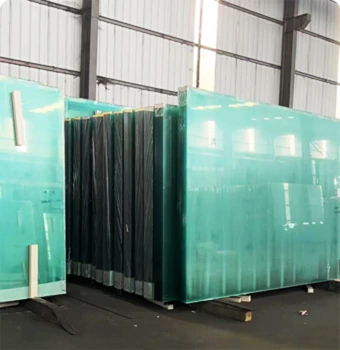The Art and Impact of Decorative Glazing
Decorative glazing is a fascinating fusion of art, architecture, and functionality that has captivated builders and designers for centuries. This technique, which involves the use of embellished glass elements, can transform the overall aesthetic of a space while offering an array of benefits, from enhancing natural light to providing an element of privacy. This article explores the history, techniques, and contemporary applications of decorative glazing, showcasing its enduring charm and value in modern design.
A Brief History
Decorative glazing dates back to ancient civilizations, where stained glass was used in cathedrals and temples to depict stories and enhance spiritual experiences. The intricate designs and vibrant colors served not only aesthetic purposes but also played a practical role in protection against the elements while allowing light to filter through. In the Middle Ages, European artists became adept at creating increasingly complex glasswork, which reflected the socio-political climates of the time.
As architectural styles evolved, so did the techniques and applications of decorative glazing. The Renaissance saw a revival of classical forms and an explosion of creativity, with artists experimenting with different colors, textures, and patterns. The Industrial Revolution brought about technological advancements that made glass production more accessible, leading to the widespread use of decorative glazing in residential, commercial, and public buildings.
Techniques of Decorative Glazing
Today, decorative glazing encompasses a variety of techniques, each contributing unique aesthetic and functional qualities. Some common methods include
1. Stained Glass This traditional method involves using colored glass pieces held together by lead came. Stained glass windows remain a hallmark of Gothic architecture, known for their storytelling capabilities and stunning visual impact.
2. Etched Glass This technique uses acid or abrasive tools to create designs or patterns on the surface of glass. Etched glass can provide a frosted appearance, adding an element of sophistication while maintaining privacy.
decorative glazing
3. Frosted Glass Frosted glass is created by sandblasting or acid-etching the surface of the glass to give it a translucent quality. It allows natural light to enter a space while obscuring visibility, making it popular for bathrooms and office partitions.
4. Painted Glass Artists use special glass paints to create vivid images or patterns directly on the glass surface. This method allows for limitless customization and can be used in both residential and commercial spaces.
5. Laminated Glass This modern technique involves sandwiching transparent interlayers between sheets of glass. Decorative elements, such as fabrics or colors, can be added, resulting in both aesthetic appeal and structural integrity.
Contemporary Applications
In contemporary architecture and interior design, decorative glazing has found versatile applications across various sectors. In residential spaces, decorative glass enhances the character of entryways, doors, and windows, introducing a touch of elegance to traditional and modern homes alike. In commercial settings, businesses utilize decorative glazing to create inviting environments that reflect their brand identity while ensuring privacy.
Furthermore, decorative glazing plays a crucial role in sustainability. Energy-efficient glass options contribute to thermal regulation, reducing heating and cooling demands in buildings. This not only leads to cost savings but also aligns with the growing emphasis on eco-friendly design practices.
In public buildings, such as museums and community centers, decorative glazing serves an educational purpose by immersing visitors in art and culture. Large-scale installations can create focal points, guiding the flow of space while igniting conversations about creativity and expression.
Conclusion
Decorative glazing is more than just an aesthetic enhancement; it is a vibrant medium that merges artistry with function. Its rich history and continual evolution highlight the significant role it plays in the architectural narrative. By embracing decorative glazing, designers can harness light, enhance privacy, and create unforgettable visual experiences. As we move forward, this art form will undoubtedly continue to inspire and shape the spaces we inhabit, enriching our environments with beauty and character. Through the lens of decorative glazing, we witness how glass transforms not just buildings, but also the way we perceive our world.
 Afrikaans
Afrikaans  Albanian
Albanian  Amharic
Amharic  Arabic
Arabic  Armenian
Armenian  Azerbaijani
Azerbaijani  Basque
Basque  Belarusian
Belarusian  Bengali
Bengali  Bosnian
Bosnian  Bulgarian
Bulgarian  Catalan
Catalan  Cebuano
Cebuano  Corsican
Corsican  Croatian
Croatian  Czech
Czech  Danish
Danish  Dutch
Dutch  English
English  Esperanto
Esperanto  Estonian
Estonian  Finnish
Finnish  French
French  Frisian
Frisian  Galician
Galician  Georgian
Georgian  German
German  Greek
Greek  Gujarati
Gujarati  Haitian Creole
Haitian Creole  hausa
hausa  hawaiian
hawaiian  Hebrew
Hebrew  Hindi
Hindi  Miao
Miao  Hungarian
Hungarian  Icelandic
Icelandic  igbo
igbo  Indonesian
Indonesian  irish
irish  Italian
Italian  Japanese
Japanese  Javanese
Javanese  Kannada
Kannada  kazakh
kazakh  Khmer
Khmer  Rwandese
Rwandese  Korean
Korean  Kurdish
Kurdish  Kyrgyz
Kyrgyz  Lao
Lao  Latin
Latin  Latvian
Latvian  Lithuanian
Lithuanian  Luxembourgish
Luxembourgish  Macedonian
Macedonian  Malgashi
Malgashi  Malay
Malay  Malayalam
Malayalam  Maltese
Maltese  Maori
Maori  Marathi
Marathi  Mongolian
Mongolian  Myanmar
Myanmar  Nepali
Nepali  Norwegian
Norwegian  Norwegian
Norwegian  Occitan
Occitan  Pashto
Pashto  Persian
Persian  Polish
Polish  Portuguese
Portuguese  Punjabi
Punjabi  Romanian
Romanian  Russian
Russian  Samoan
Samoan  Scottish Gaelic
Scottish Gaelic  Serbian
Serbian  Sesotho
Sesotho  Shona
Shona  Sindhi
Sindhi  Sinhala
Sinhala  Slovak
Slovak  Slovenian
Slovenian  Somali
Somali  Spanish
Spanish  Sundanese
Sundanese  Swahili
Swahili  Swedish
Swedish  Tagalog
Tagalog  Tajik
Tajik  Tamil
Tamil  Tatar
Tatar  Telugu
Telugu  Thai
Thai  Turkish
Turkish  Turkmen
Turkmen  Ukrainian
Ukrainian  Urdu
Urdu  Uighur
Uighur  Uzbek
Uzbek  Vietnamese
Vietnamese  Welsh
Welsh  Bantu
Bantu  Yiddish
Yiddish  Yoruba
Yoruba  Zulu
Zulu 

